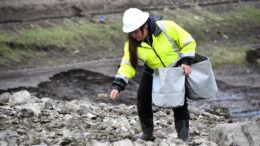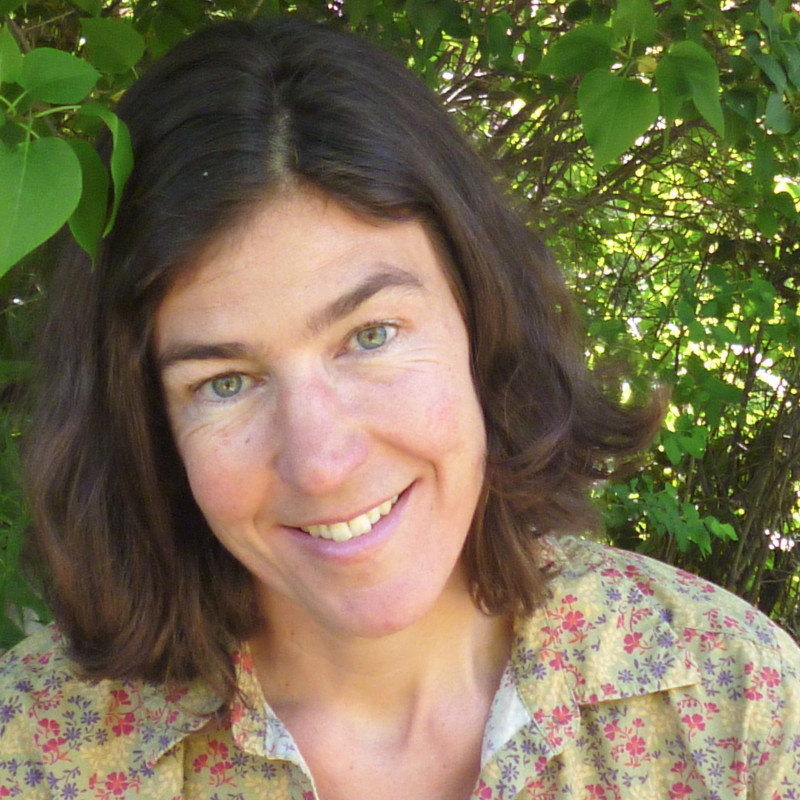On a cool October morning, Joshua Chenoweth and Alauna Grant crane their necks and peer into a canopy of round-lobed oak leaves.
“This one is loaded,” says Chenoweth, taking in the twisty limbs and furrowed gray bark. “Oaks are slow growers; that’s an old tree.”
Chenoweth, senior riparian ecologist with the Yurok Tribe, is leading the effort to replant newly revealed reservoir footprints as four dams are removed from the Klamath River in northern California and southern Oregon. To prepare for the mammoth endeavor, his crews have been collecting native seeds from around the project area. Today they’re gathering acorns from white oak trees along Scotch Creek, a tributary of the Klamath.
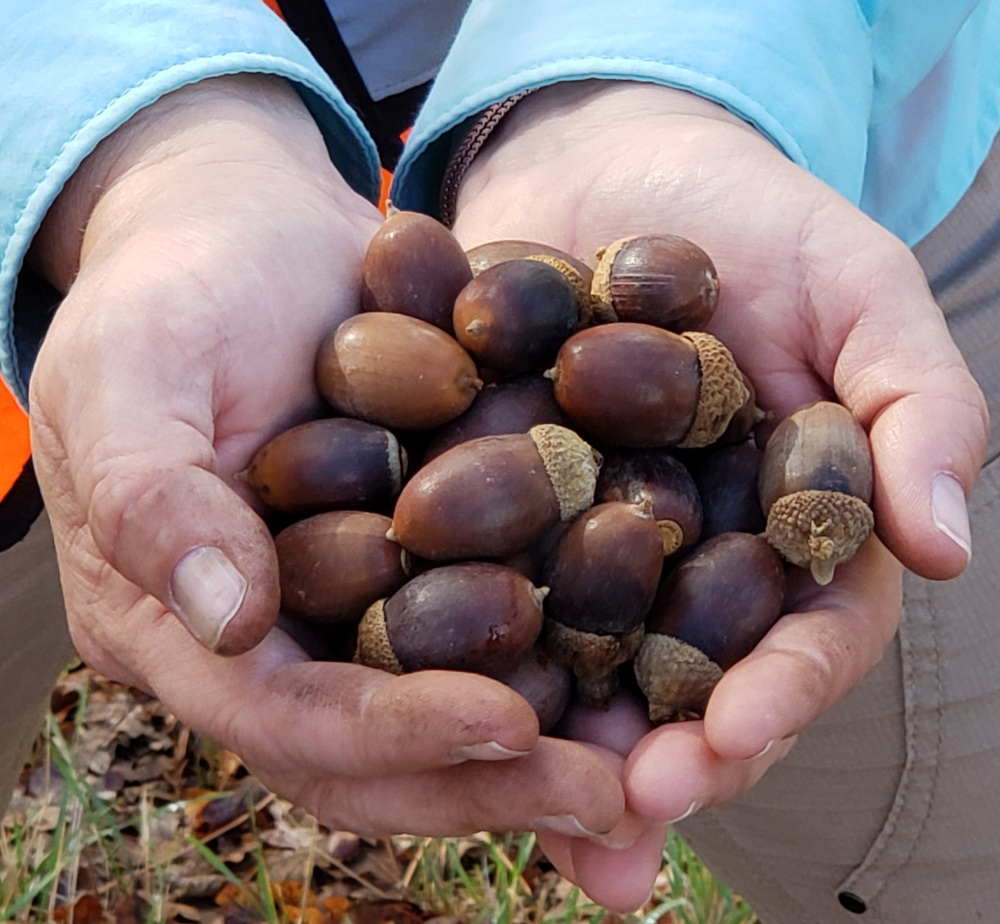
The oak leaves are still green, but the shrubs along the creek have turned shades of rust and russet; adjacent, where western meadowlarks call, is a field of straw. While Chenoweth heads upstream to scout more trees, Grant, assistant crew lead, stays behind to collect. She works quietly and methodically, examining each acorn, discarding any with obvious holes or cracks or that yield to the pressure of a finger. Later the nuts will be soaked in a five-gallon bucket and the “floaters” discarded.
Grant, a member of the Karuk Tribe, joined the vegetation crew in 2020, after the paint store where she was working went out of business. Though it can be tough — “You gotta keep drinking water and get your shade breaks,” Grant warns — she loves working outside and giving back to the Earth.
“I’m excited to see what the river is going to look like,” Grant says. “It’s going to be such a different landscape. It will actually be a river again.”
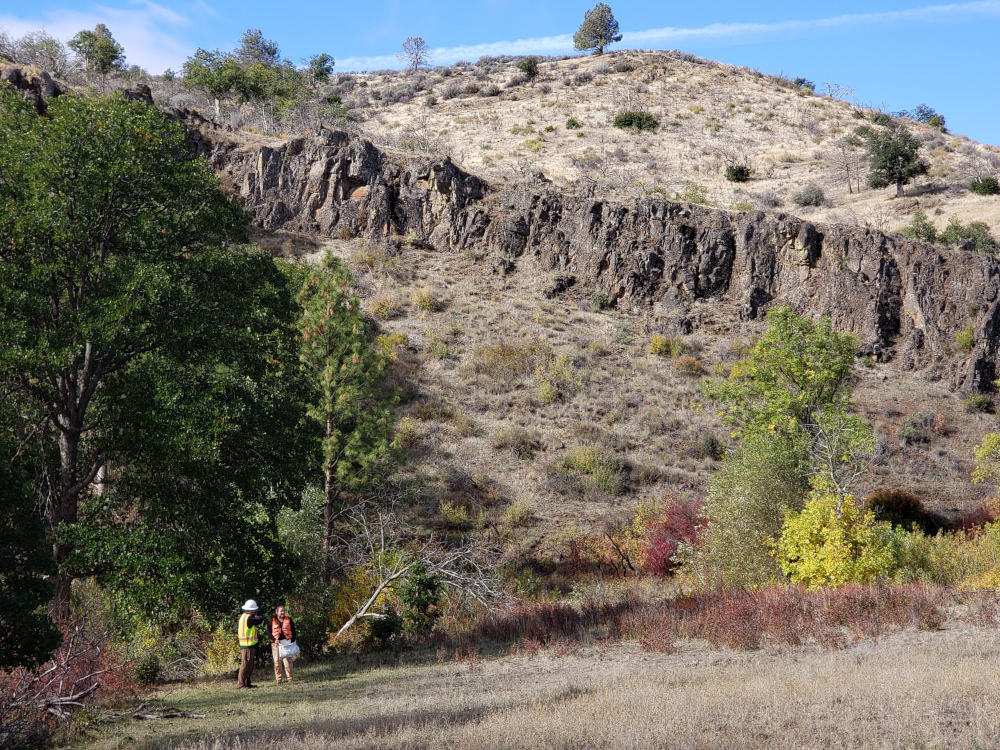
The region’s Tribes, which include the Yurok, Karuk, Hupa, Shasta and Klamath, have long depended on the Klamath River’s abundant salmon runs. Their members have been among the most passionate and effective voices advocating for the removal of the dams, which have cut off fish habitat and impaired water quality for over a century.
Now that it’s happening, the removal of the four dams of the Lower Klamath Project is being hailed as the biggest dam removal in U.S. history. Even more significantly, it’s one of the largest restoration projects ever.
Resource Environmental Solutions, spearheading the restoration, tapped Chenoweth for his experience revegetating two former reservoirs on the Elwha River in southwest Washington. This week his goal is to collect 500 pounds of white oak acorns, which he hopes will translate into 30 to 40 viable nuts per pound — and then 15,000 to 20,000 potential new trees. Acorns don’t store well, and the ones his crew is collecting now must be planted within a year.
“I’m hoping to grow 5,000 to 10,000 in nurseries, which would be ready to plant in 2025,” he explains. “If I could have an equal number to seed [directly] in the reservoirs, maybe I could get another 10,000 to germinate.”
For a project of this scale, Chenoweth must think in thousands — or tens of thousands. RES is responsible for revegetating 2,200 acres of formerly submerged lakebed, along with several miles of tributary creeks.
The acorns are just one element of this effort. Since 2018, RES has contracted crews to collect seed from around 100 different native plant species.
It would be impossible to directly collect enough seed to cover such a vast area, so several commercial nurseries have partnered with RES to “amplify” seed. By growing plants specifically for their progeny, a single seed can yield hundreds or even thousands more. So far RES has secured 80,000 pounds of “pure live seed” — about 15 billion individual viable seeds.
“Seed mixes tailored for different locations across the project area will cover the bulk of the reservoir footprint,” says Dave Coffman, geoscientist and project director at RES. They will supplement seeding with trees such as blue elderberry and Klamath plum, shrubs like buckbrush, and an array flowering plants.
Their approach is “replanting by community” — grouping species that will help each other thrive by holding in moisture and buffering from the wind. Planting densely will also help keep invasive weeds like medusa head and reed canary grass from taking over the reservoir footprints, which will essentially be blank slates once drained.
Early on RES hired Siskiyou BioSurvey, a group of nine botanists based in Ashland, Oregon, to help identify appropriate native species and find good collecting locations. Some plants have been chosen for their cultural significance or importance to pollinators. Hedgerow Farms, a nursery near Davis, California, is growing thousands of milkweed rhizomes for the project. Milkweed is the host plant of monarch butterfly caterpillars, and the flowers attract a range of bees and butterflies.
“The faster we can bring pollinators to the reservoir footprints, the faster the rest of the plantings become successful,” says Coffman.
The plantings will help stitch together the landscape, but the river will do most of the work all by itself, he adds. “The approach is one of process-based restoration, where over time the river will do what the river does.”
Planting the First Acorns
On Jan. 16 Chenoweth’s crew gathers at Iron Gate reservoir to begin seeding along the shoreline. Less than a week before, the gate at the base of Iron Gate, the lowest of the Klamath River dams, was cracked open, and a slurry of water, sediment and rocks began gushing out, initiating the draining — or drawdown — of a reservoir first filled in 1962.
Chenoweth explains the strategy: “Acorns first; then we’re going to seed it. Next, we’ll plant shrubs and trees starting on February 3.”
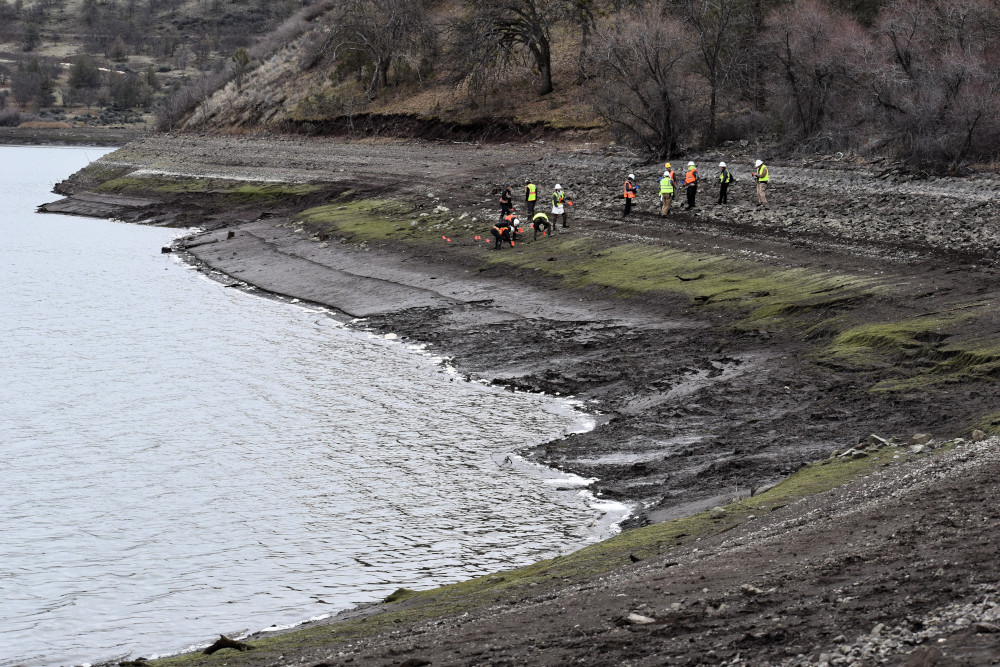
Five botanists from Siskiyou BioSurvey are here, and Chenoweth’s crew has staffed up. Most of the dozen or so planters are members of the Yurok Tribe.
“Let’s keep all foot traffic in the flagged zone,” Chenoweth calls as the crew files down to the shore. The seeds of nonnative weeds love to cling to muddy boots.
The shoreline has already dropped several feet, exposing a band of sticky mud skimmed with green — strands of an aquatic plant, exposed and dying, that emit a pungent, briny odor.
They start on a north-facing shore with the acorns some of them collected last fall. “To me it’s a big symbolic moment to have a member of the Yurok Tribe put the first acorn in the ground in the reservoir footprint,” says Dave Meurer, director of community affairs at RES.
Richard Green, field technician and Yurok Tribe member, demonstrates the technique. The mud is so soft he can drive the nut in without using his hori-hori knife. He plants the acorns, swollen from an overnight soaking in water, sideways, then covers them with sticky mud.
Others join him, and soon clusters of bright blue and red flags dot the drab shoreline. Once 30 clusters are planted, a crew member walks into the center and takes a GPS reading; then the crew pulls the flags and repeats the process farther along the shore.
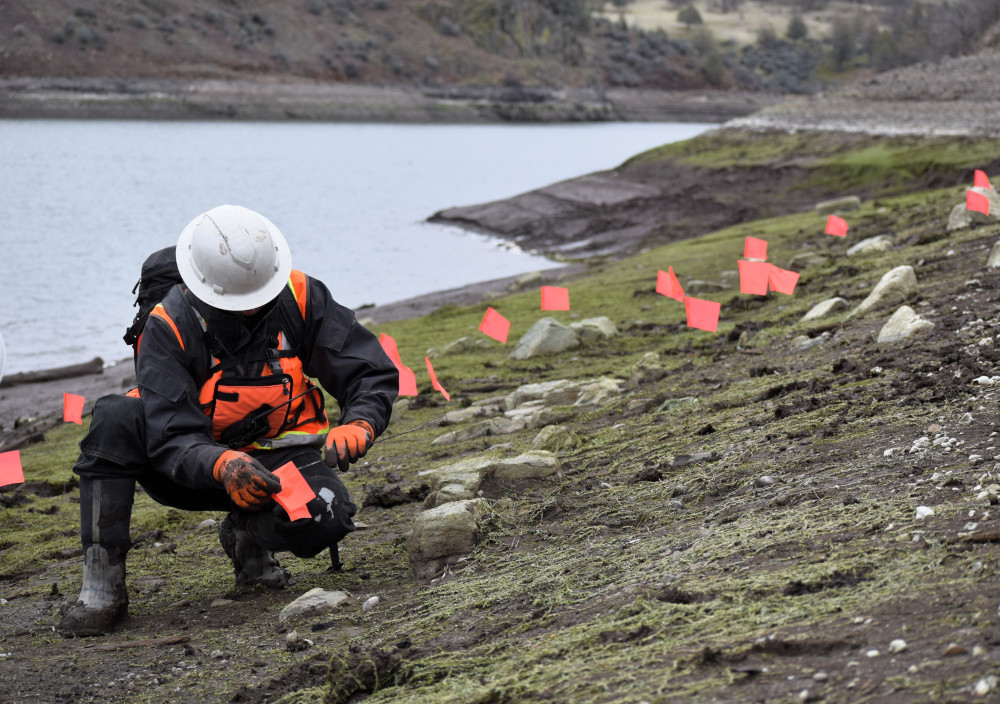
Chenoweth leaves one crew to plant acorns and takes another to start seeding. They’re using a mix that includes yarrow, fescue, wild rye and bunchgrasses — hardy natives that will thrive in this rocky upland zone. Grant and another crew member demonstrate the hand-broadcasting technique: keep moving and take advantage of the wind. As she tosses handful after handful, the tiny seeds disappear into the mud.
From Overlook Point, in their high-vis vests, the crew are bright specks on the fissured shoreline. Though RES may turn to seeding from the air via helicopter if they start running out of time this spring, they will rely on hand sowing as much as possible.
“We know for a fact, based on experience, that we’ll get better coverage with seed and higher level of success with hand planting,” says Coffman.
The crew is lucky: They can easily access this part of the reservoir by truck. “It’s intense, physical work,” says Greg Carey, cofounder of Siskiyou BioSurvey. Iron Gate reservoir is sinuous, skinny, and nine miles long; later this week they’ll be planting in areas that can only be accessed by foot, which means packing 40 pounds of acorns cross-country, boots taking on more mud with each step.
Several of the planters wear gloves, masks, caps and hoodies to brace against the steady breeze coming off the reservoir. Come summer the landscape will turn hot, dry, and windy — tough conditions for plants to take root. To take advantage of the residual moisture in the mud, Chenoweth’s crews will chase the new shoreline as the lake recedes, repeating the process at the two other reservoirs: Copco Lake, a few miles upstream of Iron Gate, and Topsy, behind J.C. Boyle dam in Oregon. Before long the Klamath River’s new shape will reveal itself, and the quagmires of mud will bloom.
Carey, who typically takes winters off, will be out with the planting crew as much as possible to witness the landscape transforming around them.
“We’re smelling the lakebed; all of this biology that has just died and become nutrients,” says Carey. “The plants are just going to explode.”
![]()
Previously in The Revelator:
Could California’s Next Dam Removal Take Place on This Endangered River?

